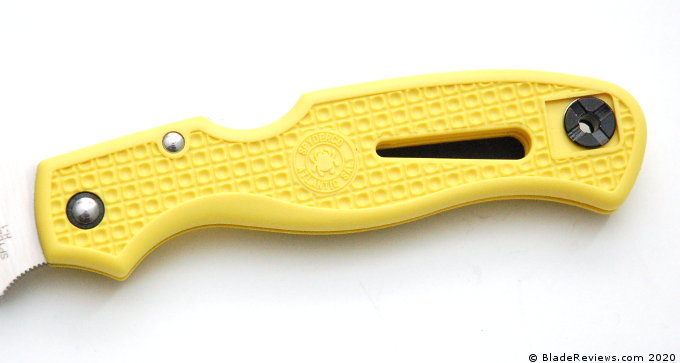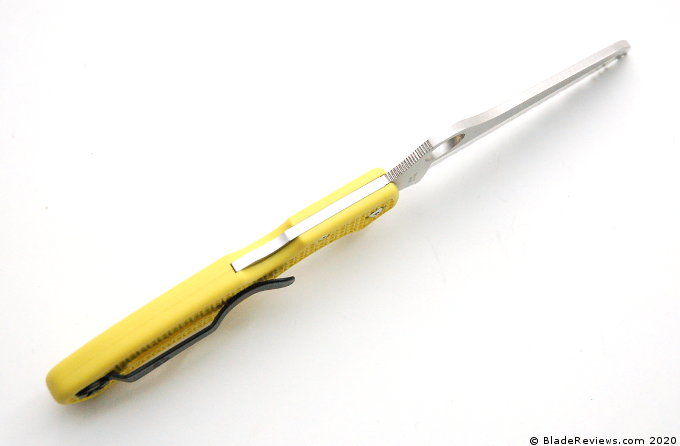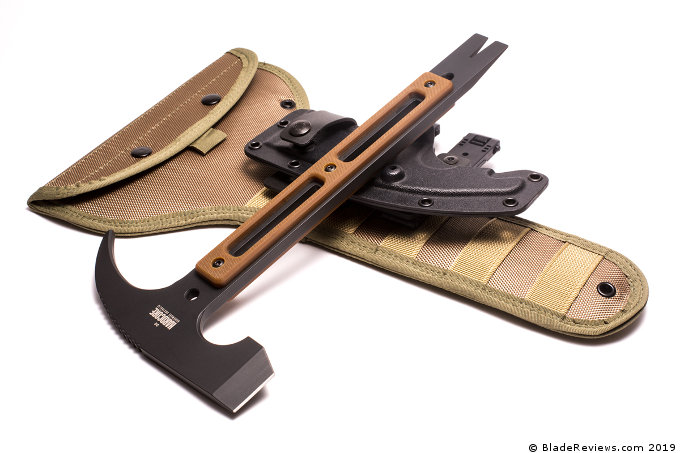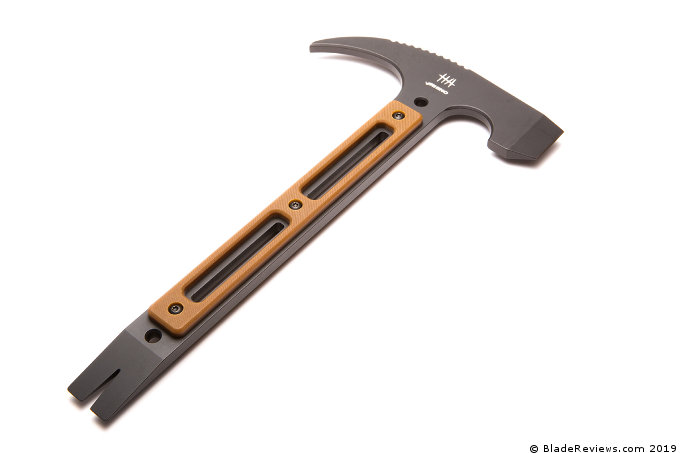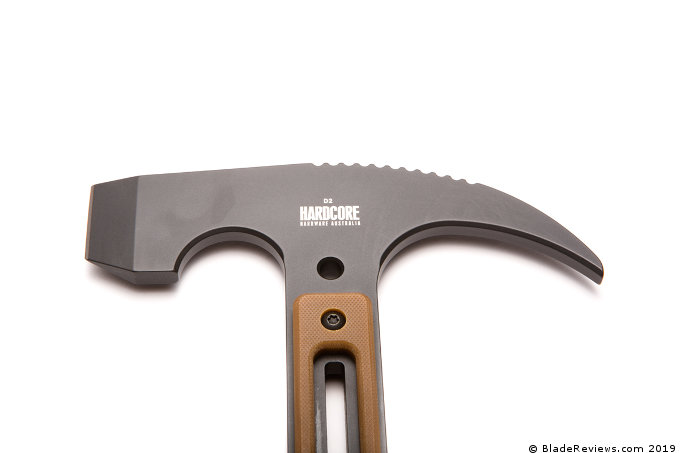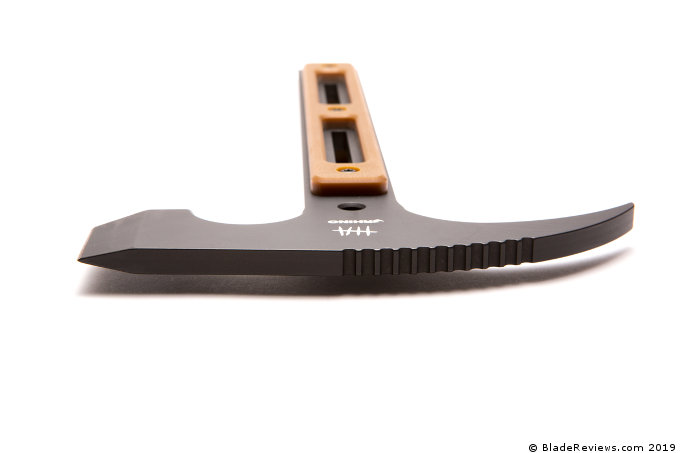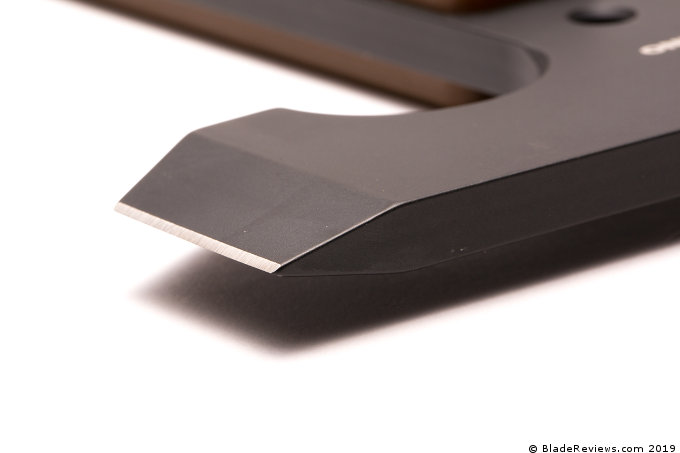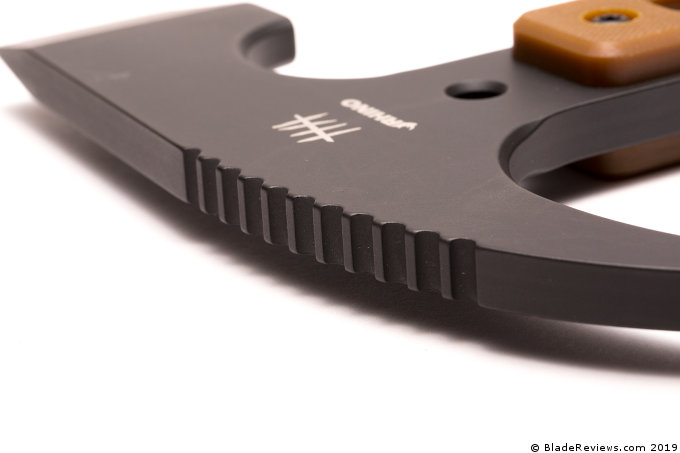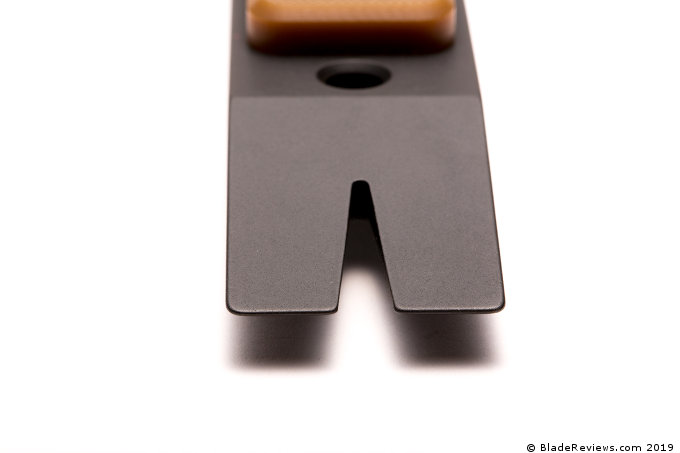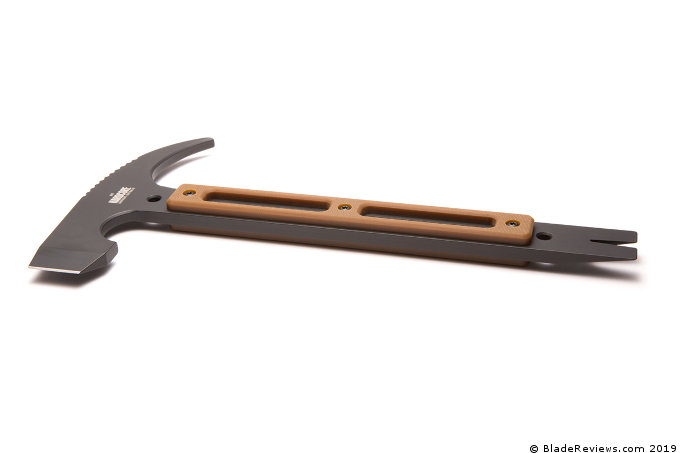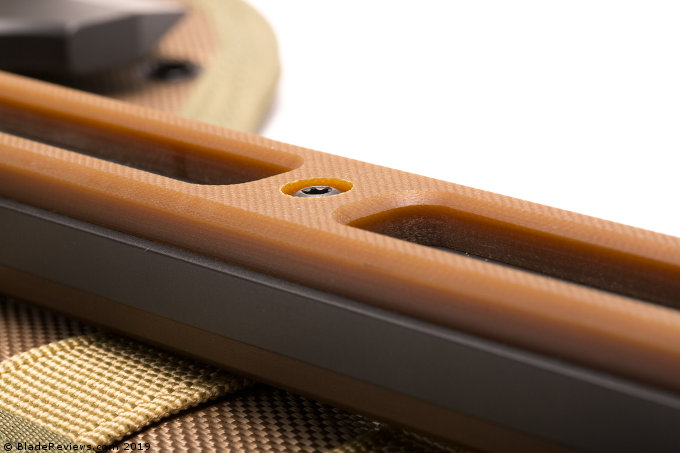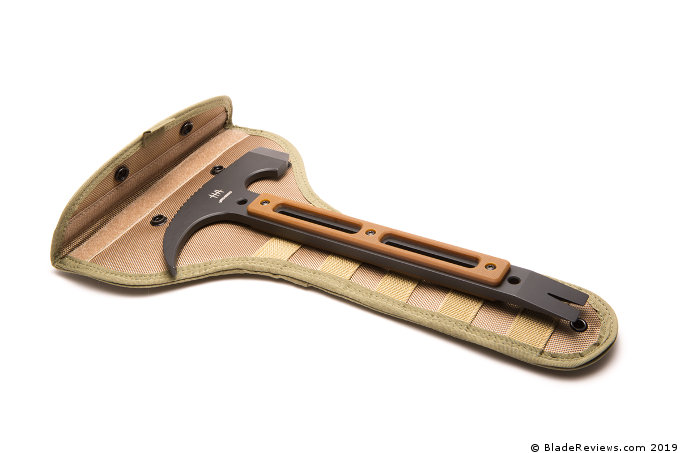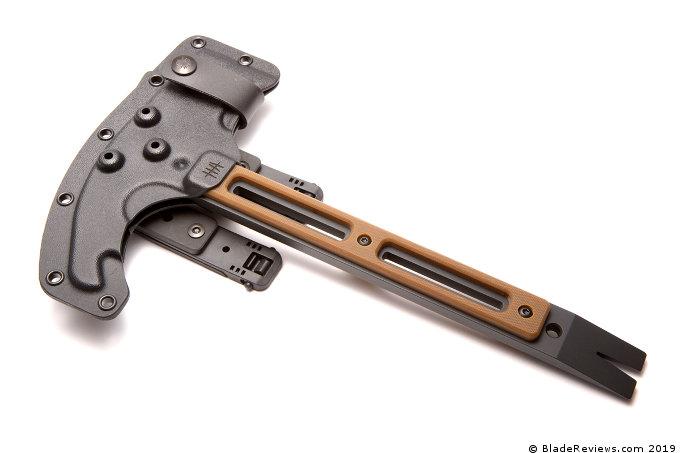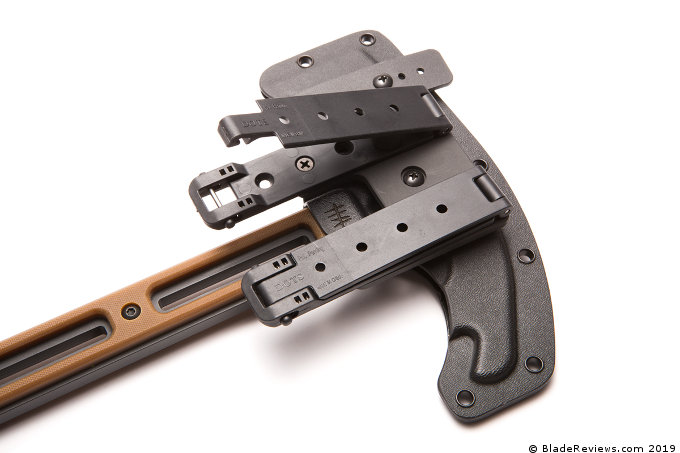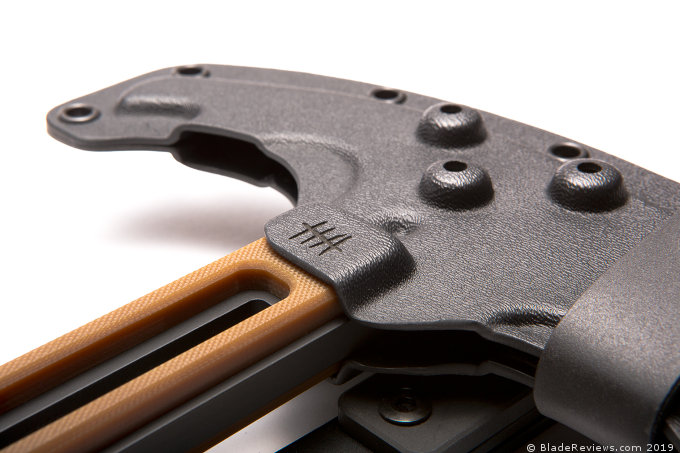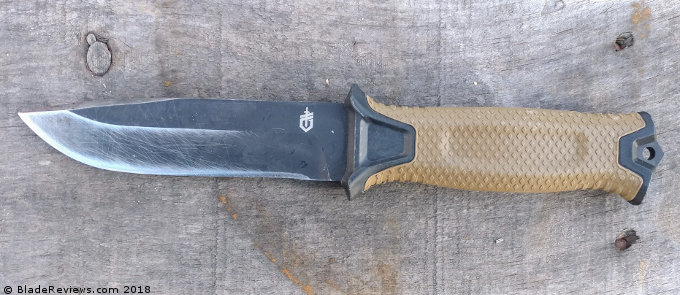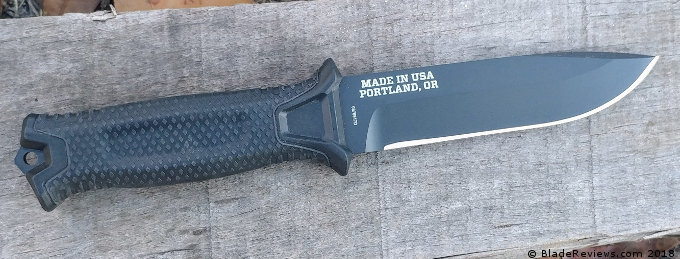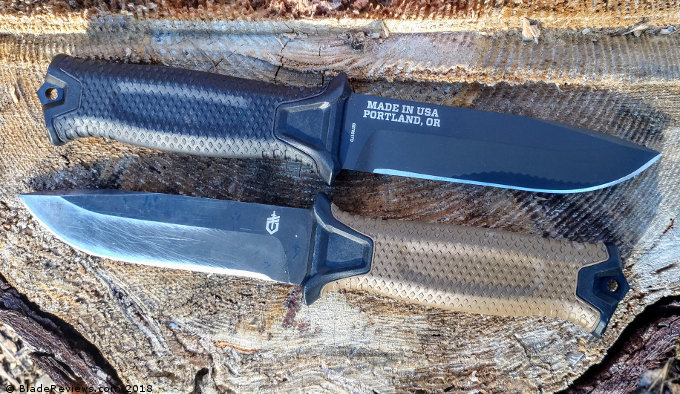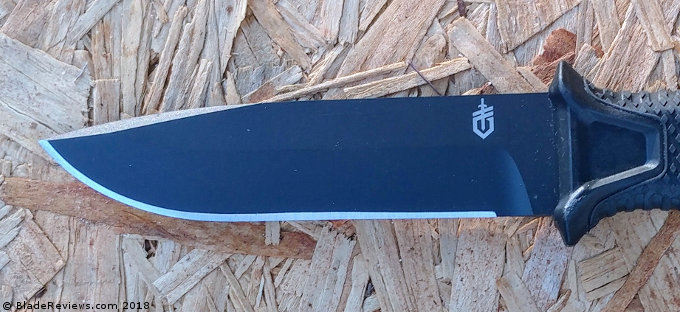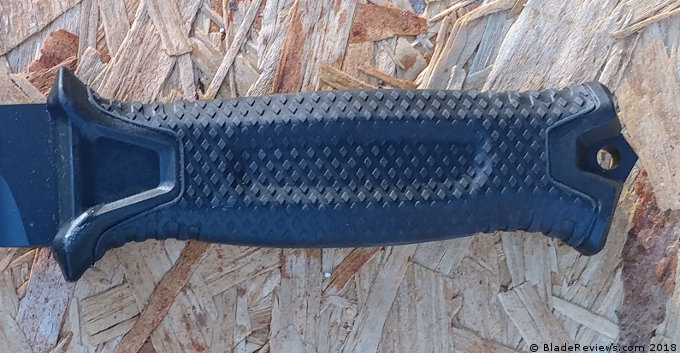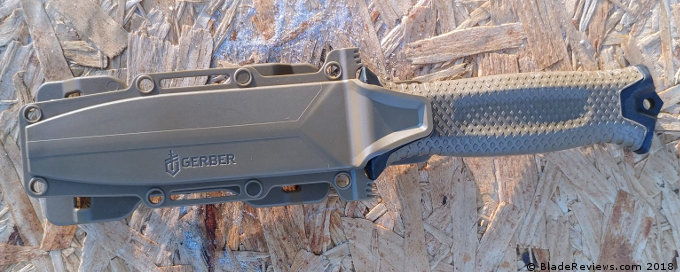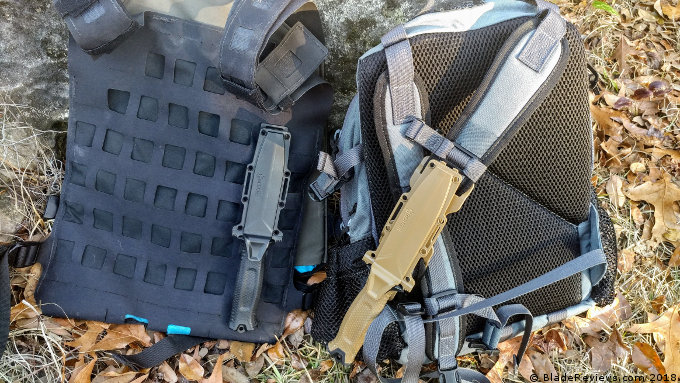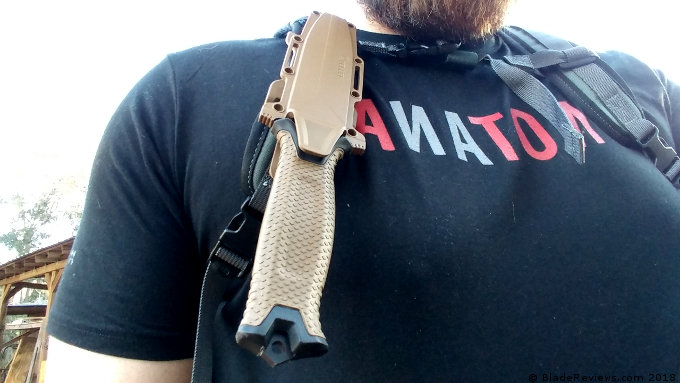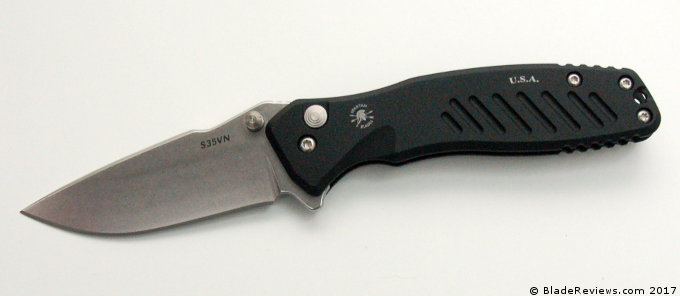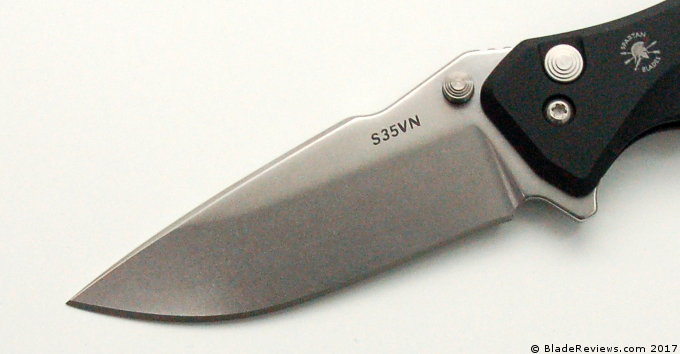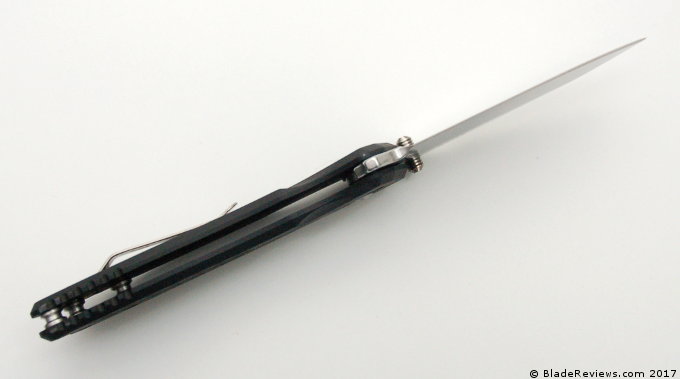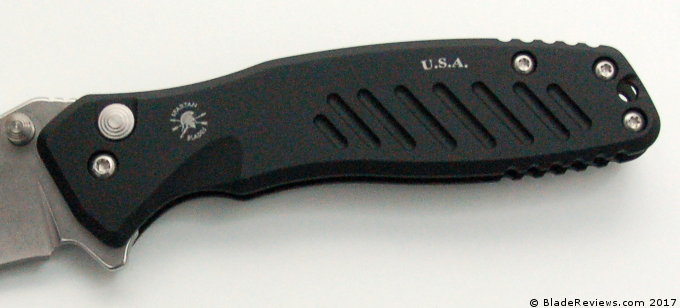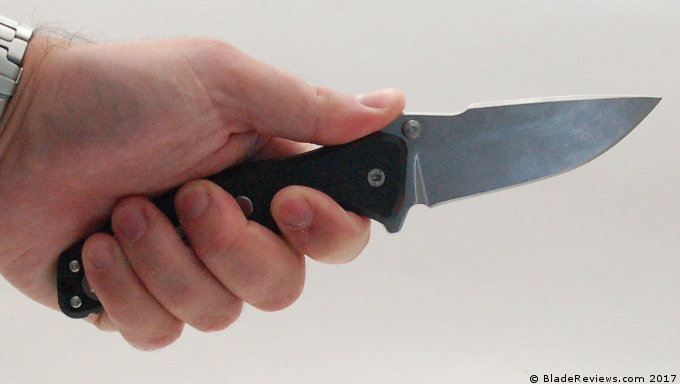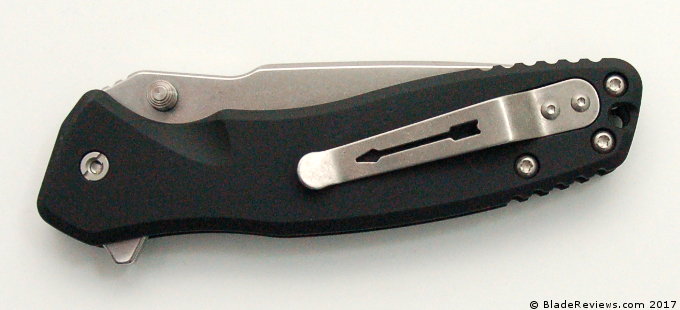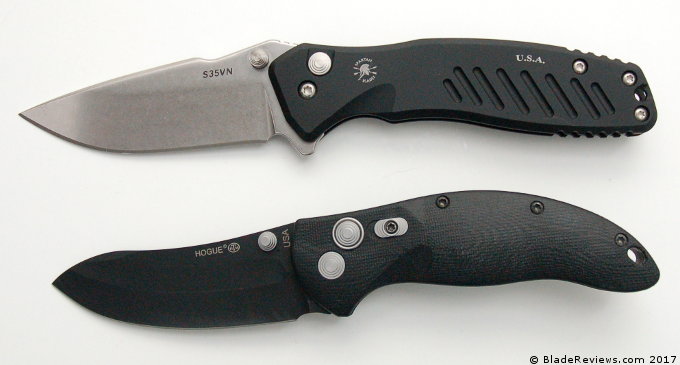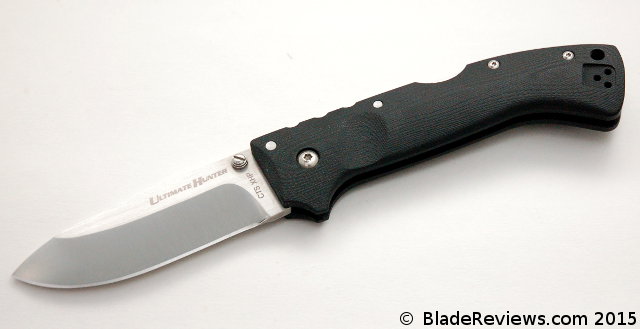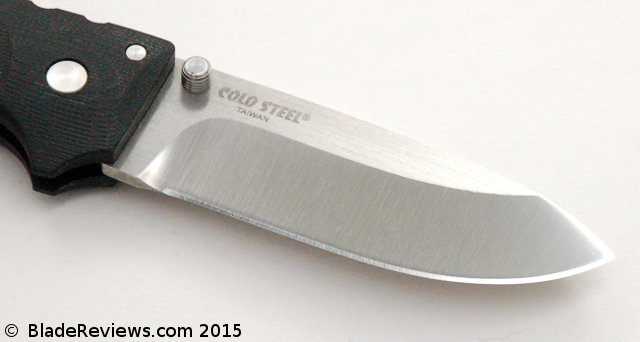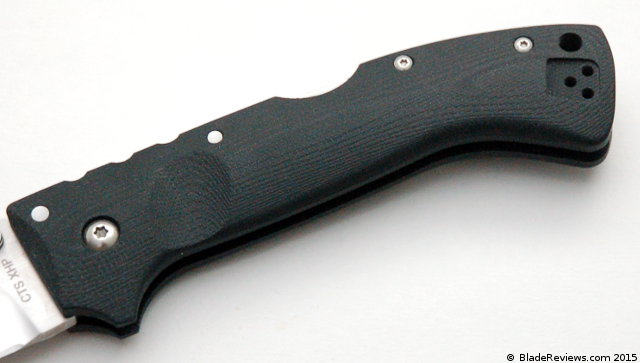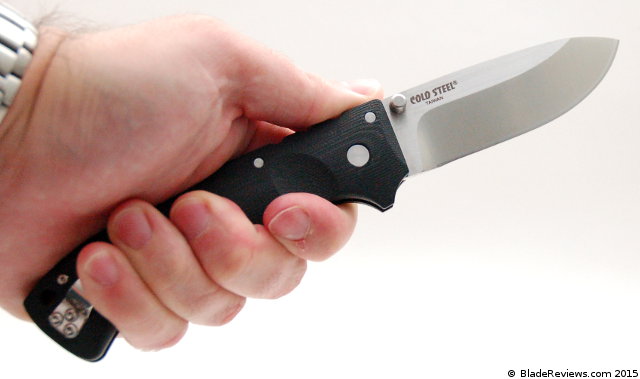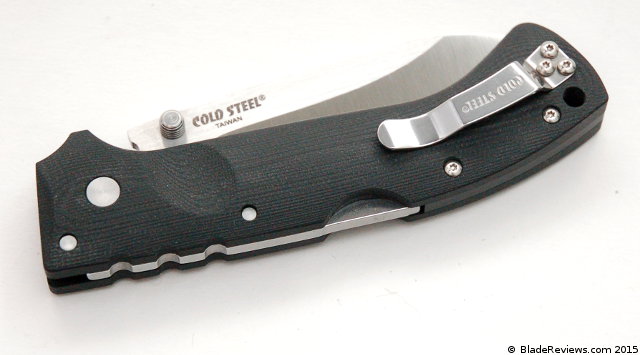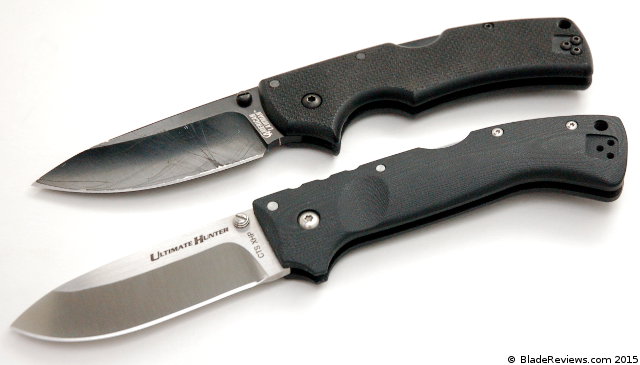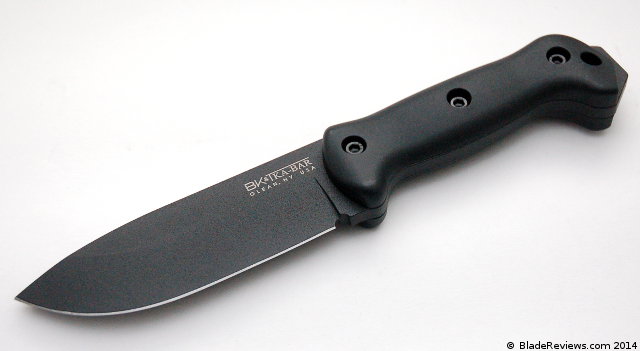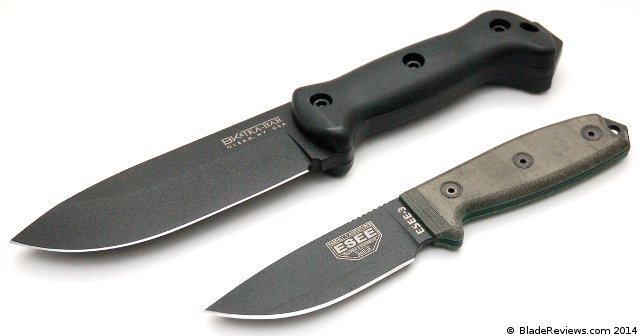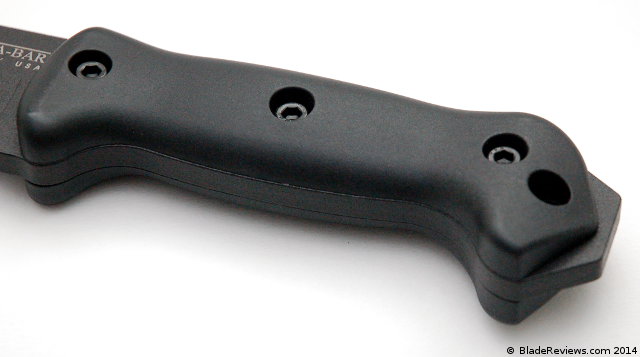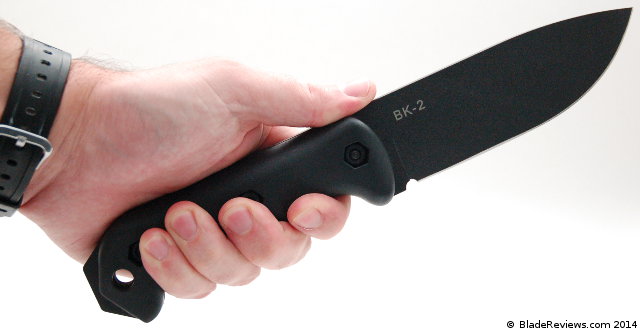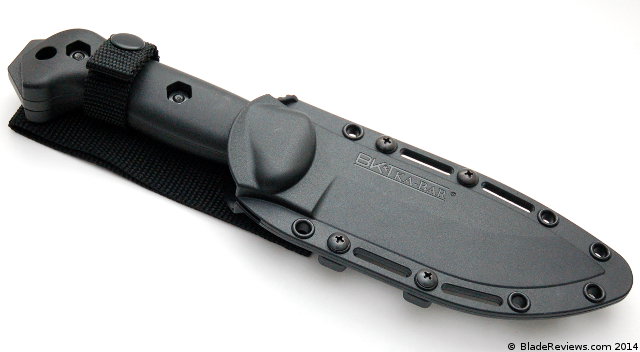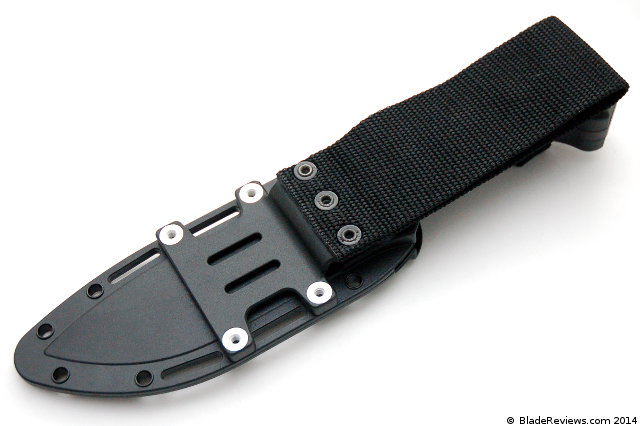This review is a series of firsts. After over 400 reviews, this is the first time we have reviewed a knife with a fully serrated blade. It’s also the first time we have reviewed a knife with H1, an uber stainless blade steel. At first glance, that may hold some significance. But really, this is a purpose built knife. The Spyderco Atlantic Salt is designed for marine use. This is a mariner’s knife.
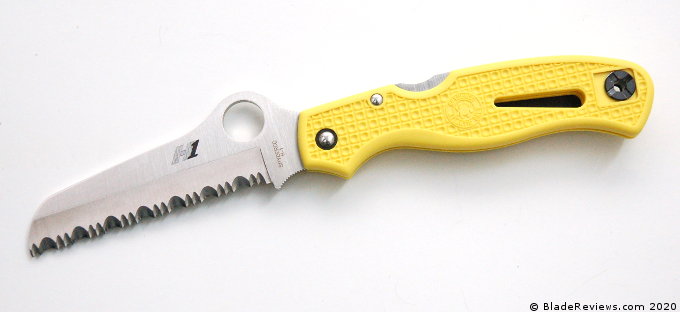
Buy the Spyderco Atlantic Salt at BladeHQ
Actually, according to Spyderco this is a rescue knife adapted for marine use. They took their Spyderco Rescue, and outfitted it with a high visibility handle and rust proof H1 steel. It’s a purpose built tool and probably not something most people are going to consider for their Every Day Carry (EDC) knife.
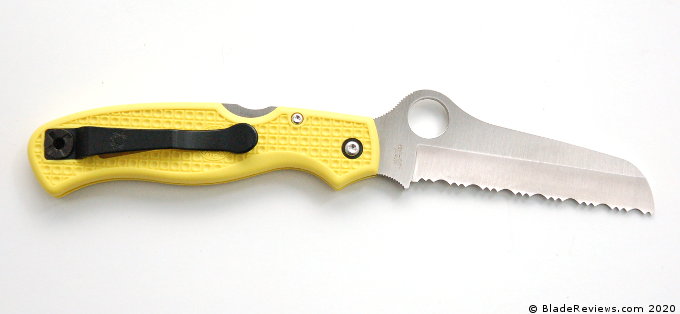
I have wanted to check out a knife in H1 for a while. According to Spyderco this is a completely rust proof steel. That’s different from a “stainless” steel, as even stainless steel can and will rust. Stainless steel will simply “stain less” than a non-stainless steel.
And as most steel enthusiasts know, blade steel is an exercise in compromise. Improving one quality of a knife’s blade steel, like hardness, often comes at the expense of something else, like toughness, ease of sharpening, or stain resistance. So what will be the compromise with H1? Will it cut like a butter knife and be impossible to sharpen? Let’s find out.
General Dimensions and Blade Details
The Atlantic Salt has an overall length of 8.25″, a 3.678″ blade, weighs 2.75 ounces, and is made in Japan. This is a pretty large folding knife, but it doesn’t feel overly big thanks to the unusual blade shape, high visibility handle, and ultra-light construction. EDC knives this big typically give off a tactical or “weapon” vibe, but this Atlantic Salt reads more like a tool and doesn’t strike me as being particularly threatening.
For these reasons I’ve actually carried the Atlantic Salt quite a bit. I don’t own a boat, and while I live in South Florida, I don’t get on to the water as much as I would like. So at the time of writing this review I can’t say I’ve used it as a mariner’s knife. But I have carried it and used it, and plan on keeping the knife for long term testing. It will join me on fishing trips and the occasional boat ride.
Here is the Atlantic Salt next to my Delica and Endura. As you can see, it’s only a little shorter than the Endura.
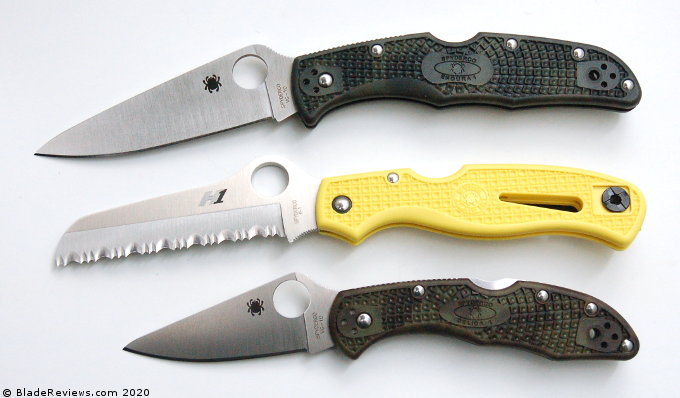
The blade is purpose built, and will take some getting used to if you are a fan of drop points. It’s a hollow ground wharncliffe with a fully serrated edge after all. Of course this was done for a reason. It’s a wharncliffe to reduce the risk of stabbing yourself on the pitching deck of a boat. It’s serrated to cut through line, and possibly clothing, and to take advantage of H1’s unique properties. It’s hollow ground because some believe H1 is “work hardened” rather than heat treated. What that means, is that as the blade is ground and the metal is removed blade steel hardens due to the force on the steel rather than a heat treat. This phenomenon is also referred to as “plastic deformation”. So they need to grind both sides simultaneously to avoid warping the blade, and they can do that with a hollow grind. Each aspect of the Atlantic Salt’s blade was done for a reason.
And lets turn to H1 itself. H1 is a high chromium austenic steel. The term “austenic” has to do with the crystal microstructure of the steel. I won’t get into a chemistry lesson, but if you want a deep dive on H1 I recommend this article by Knife Steel Nerds. You will learn all you want to know about H1 in that article.
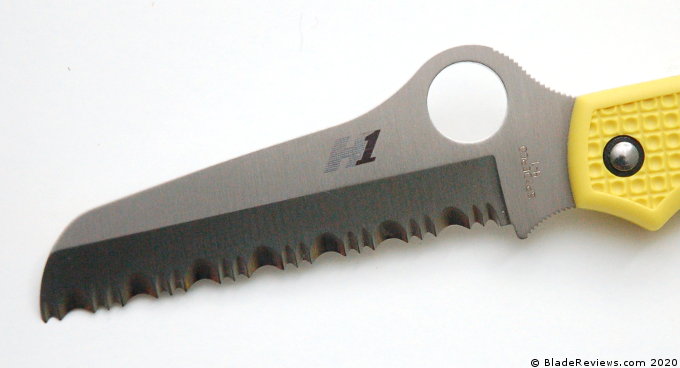
The takeaway is that H1 is structurally different from the typical ferric stainless steels you find in most knife blades. It’s hallmarked by being completely stain proof, but the sacrifice is hardness. Bro science and anecdotal evidence suggest that a serrated blade best takes advantage of H1, and provides better edge retention. But modern metallurgy doesn’t explain why that would work scientifically. The Knife Steel Nerd even says that grinding a blade shouldn’t be enough to work harden it, and he’s the Knife Steel Nerd. So who’s to say?
All I can really do is test this stuff out, so that’s what I did. The knife came surprisingly sharp out of the box. It cut paper cleanly and easily. It tore through cardboard. I bought this knife on Black Friday, so it survived the holiday season with me. Lots of boxes lay broken in the wake of the Atlantic Salt. The serrated edge is surprisingly effective. I got a lot of work done with the knife before needing to sharpen it.
In fact, the knife was still tearing through things effectively, but I decided to pull out my Spyderco Golden Stone anyways to see what a sharpening session would do for the H1 blade. I used the rounded corner of the Golden Stone and zipped the serrated edges along the edge of the stone. Spyderco recommends sharpening both sides of a serrated blade, and that’s what I did here. The results were great. The knife got extremely sharp quickly. The Atlantic Salt slipped through cardboard as if it were butter. This is an easy knife to sharpen if you have a rounded stone for the serrated edge. I happened to use my mythical Golden Stone, but the Sharpmaker works beautifully for a knife like this.
Here is another size comparison. This time I have the Atlantic Salt next to my Para 2 and Tenacious:
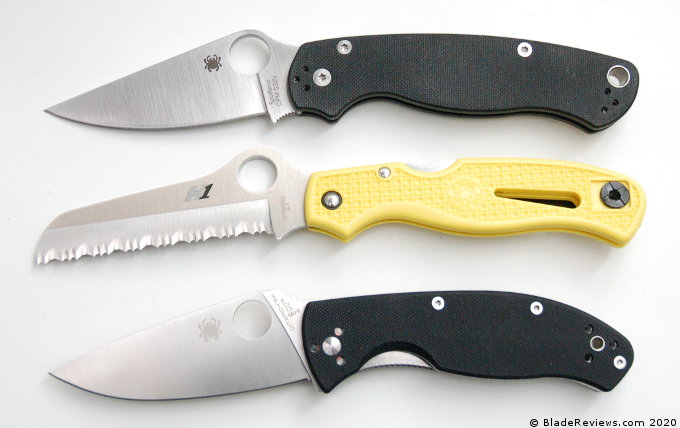
The blade steel also exhibits excellent toughness. I didn’t test this in any particular manner, but noticed that the steel is so tough that it scratches easily. I noticed this immediately after cutting cardboard, and this YouTube video shows the wear on an H1 blade after 5 years. I think it’s interesting how the person who made that video compared the wear pattern on the H1 blade more to titanium than stainless steel. I would agree. My other blades don’t wear like this.
All said, I was surprised with the utility of the H1 blade. Now I know H1 to sharpens easily, keeps a decent edge, and has the benefit of being completely rust proof. The serrations may be important. I need to buy another knife with a plain edge in H1 to test it out.
Handle, Ergonomics, and Pocket Clips
In contrast to the unique and alien blade, the handle of the Atlantic Salt is familiar territory. Anyone who has handled a Spyderco Delica or Endura will immediately recognize the construction and materials of the Atlantic’s handle. That said, there are still plenty of things to note here.
First of all, the handle is a shock of bright yellow. That’s great for marine use and work knives in general. It’s possible you could drop this knife in shallow water and still locate it. Certainly it would stand out on the forest floor. The handle design is also completely devoid of metal liners. Instead, it’s 100% injection molded FRN (Fiberglass Reinforced Nylon). It still feels sturdy without the liners, but I wouldn’t consider the Atlantic Salt to be a hard use knife.
Continuing with the Mariner’s knife theme is the inclusion of a shackle key. That’s the elongated teardrop shaped hole in the handle. This is used to tighten screw pin shackles that you find mostly on sail boats. The Glessers were sailors, presumably before they settled in landlocked Colorado, so they are especially sensitive to the needs of a mariner.
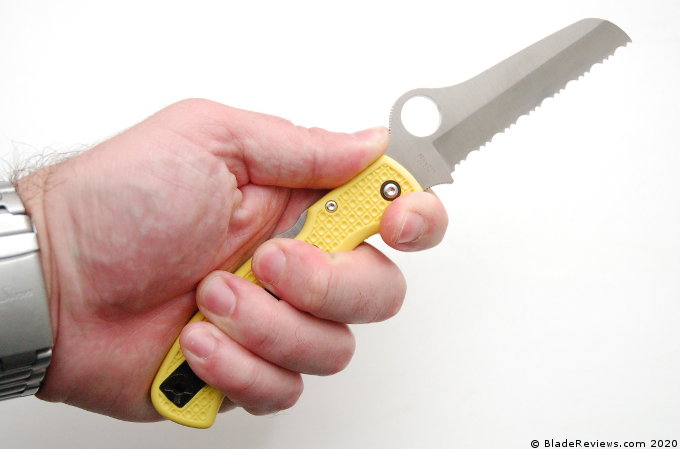
It shouldn’t come as a big surprise that the Atlantic Salt is comfortable in hand. The handle is generous, easily accommodating large hands, and balances high traction with comfort. There is contouring all around the handle feeding into the heavily textured flats. There is good jimping on both the forward “50/50” finger choil (meaning 50% of the choil is handle, 50% is blade), and the severely angled thumb ramp. Your fingers are unlikely to slip forward towards the edge, even if your hands are wet. The balance point of the knife is right behind the pivot, lending the knife a slightly blade heavy feel unless you use the forward choil. All said the handle is well considered and exceedingly comfortable.
Even the pocket clip of the Atlantic salt is different. Here it’s a spring clip made of powder coated titanium. That’s another first for the blog. It sits high on the handle in a tip up configuration, and can swapped to the right or left side. The screw that holds the clip in place is slotted and drilled through so you can run a thin lanyard through it. It’s an elegant approach to the typical awkwardly placed lanyard hole, and one I wouldn’t mind seeing in other designs.
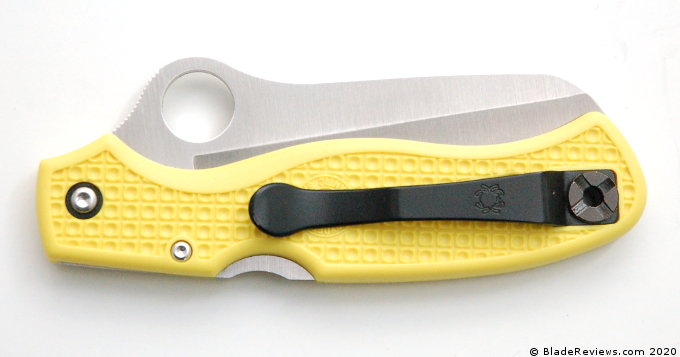
In pocket the Atlantic Salt carries pretty well. It’s a lightweight knife, so that’s nice. It’s also relatively thin; about the thickness of a Delica. Where the Atlantic Salt falls a little short, is that it’s a very wide knife. That’s due to the unusual design. I definitely feel this knife in the pocket. That’s not the end of the world, but worth noting. There is some bulk associated with the Atlantic Salt.
The clip is secure and has excellent retention. While the knife rides low in the pocket, that canary yellow handle is tough to ignore. Here is your in the pocket shot:
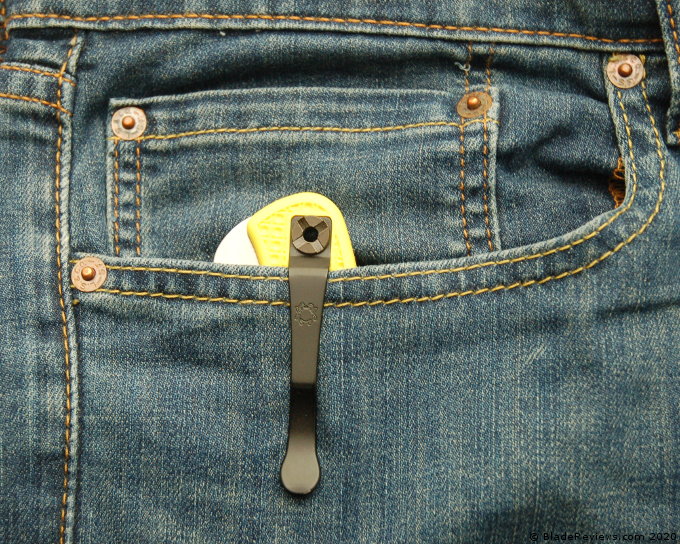
Deployment and Lockup
The blade is opened by the prominent thumb hole. It is oversized and easy to access. I tend to take that granted on a Spyderco, but what caught me by surprise was how smooth the action is on this knife. It’s buttery smooth. I can’t tell by peering down into the handle, but this may be a washerless design. I don’t know, but whatever is going on works, so I’m hesitant to take the knife apart. Once you overcome that initial spring tension the blade opens easily and locks with a satisfying click.
Speaking of locks, the Atlantic makes use of a lockback. It’s secure, and my knife is free of blade play in any direction, but this is not a knife I’d use for serious woodwork or other hard use tasks. Sure, it can cut into a board, but where the Atlantic salt truly excels is in sawing through fibrous materials and cardboard. But the linerless design doesn’t inspire confidence with truly tough tasks, and I’d be careful not to test the limits of the design. That said the lockback performs flawlessly. It is secure when open, and disengages easily with the push of a thumb.
Blade centering is perfect on my knife.
Spyderco Atlantic Salt Review – Final Thoughts
As a collector, I find the Atlantic Salt to be a quirky and charming knife. It’s different. That’s for sure. As a purpose built tool I think it’s a success. Granted I have yet to take this one on a boat, but I grew up on boats so I have some understanding of the application. And I live a quarter mile from the Gulf of Mexico so I’m around salt water regularly. The Atlantic Salt is well considered and a practical marine work knife.
What surprised me was how much I enjoyed the Atlantic Salt as an EDC. It kept finding it’s way back into my pocket. It’s wide, which is it’s biggest downfall in my book as a daily carry piece, but it’s lightweight and carryable. The H1 steel is actually a pretty decent blade steel. It’s nothing like M390 or a super steel in terms of edge retention, but I got a lot of work done with the serrated edge, and the knife sharpened quickly and easily. I was expecting a bigger compromise from a completely rust proof steel.
In the end, I’d buy another knife with a H1 blade. I’d like to try out a plain edge, just to get a better feel for how well the steel holds its edge.
For now, the Atlantic Salt will remain in my permanent collection. It’s unique, well considered, and fully functional. I’d recommend it if you need a rust proof knife, or are simply curious about it like I was.
- Superior Quality: It is made from H1-Steel which is a precipitation-hardened steel containing nitrogen instead of carbon, which cannot rust.
- FRN Handle: It is textured with a Volcano Grip pattern, the molded fiberglass reinforced nylon (FRN) handle is visible marine yellow, equipped with a reversible titanium pocket clip for right or left: handed use.
- Game Changer: The serrated hollow-ground blade offers remarkable cutting performance in and around fresh and saltwater.
- Corrosion Resistant: The knife is completely ambidextrous and utterly impervious to corrosion.
- Specification: It has a overall length of 8.25", blade length of 3.6" and a weight of 2.75 oz. This knife is made from Japan.
Editor: I recommend buying the Spyderco Atlantic Salt at BladeHQ or Amazon. Thank you for reading.
